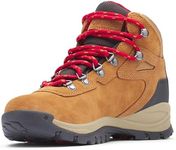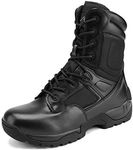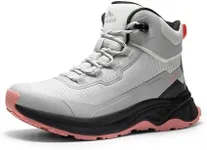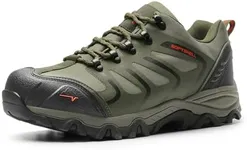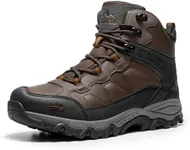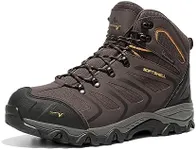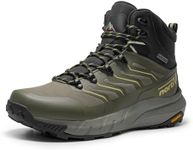Buying Guide for the Best Cheap Hiking Boots
Choosing the right hiking boots is crucial for a comfortable and safe hiking experience. The right pair of boots can make a significant difference in your overall enjoyment and performance on the trail. When selecting hiking boots, it's important to consider several key specifications to ensure you get the best fit for your needs. Here are some important factors to consider when choosing hiking boots.Fit and ComfortFit and comfort are the most important aspects of hiking boots. A good fit ensures that your feet are well-supported and reduces the risk of blisters and other foot injuries. When trying on boots, make sure there is enough room to wiggle your toes, but your heel should not slip. It's best to try on boots at the end of the day when your feet are slightly swollen to get a more accurate fit. Consider the type of socks you will wear while hiking and try the boots with those socks.
MaterialThe material of the hiking boots affects their durability, weight, and breathability. Leather boots are durable and provide good support but can be heavier and less breathable. Synthetic materials like nylon and polyester are lighter and more breathable but may not be as durable. If you plan to hike in wet conditions, look for boots with waterproof membranes like Gore-Tex. Choose the material based on the type of hiking you plan to do and the conditions you expect to encounter.
WeightThe weight of the hiking boots can impact your energy levels and overall comfort on the trail. Lightweight boots are ideal for day hikes and less strenuous trails, as they reduce fatigue. Midweight boots offer a balance between support and weight, making them suitable for longer hikes and moderate terrain. Heavyweight boots provide maximum support and durability for challenging terrain and multi-day hikes but can be tiring to wear for extended periods. Consider the type of hiking you will be doing and choose the weight accordingly.
Support and StabilitySupport and stability are crucial for preventing injuries and ensuring comfort on uneven terrain. Hiking boots with good ankle support help prevent sprains and provide stability on rocky or uneven trails. Look for boots with a sturdy midsole and a supportive insole to provide cushioning and reduce impact on your feet. If you have weak ankles or plan to carry a heavy backpack, opt for boots with higher ankle support. For lighter hikes, lower-cut boots may be sufficient.
TractionTraction is important for maintaining grip on various surfaces, including wet, muddy, or rocky terrain. The outsole of the hiking boots should have a good tread pattern to provide traction and prevent slipping. Deeper lugs offer better grip on loose or uneven surfaces, while shallower lugs are suitable for well-maintained trails. Consider the type of terrain you will be hiking on and choose boots with appropriate traction to ensure safety and stability.
BreathabilityBreathability is important for keeping your feet dry and comfortable, especially during long hikes or in warm weather. Boots with good breathability allow moisture and sweat to escape, reducing the risk of blisters and discomfort. Look for boots with mesh panels or breathable membranes to enhance airflow. If you plan to hike in hot or humid conditions, prioritize breathability to keep your feet cool and dry.

